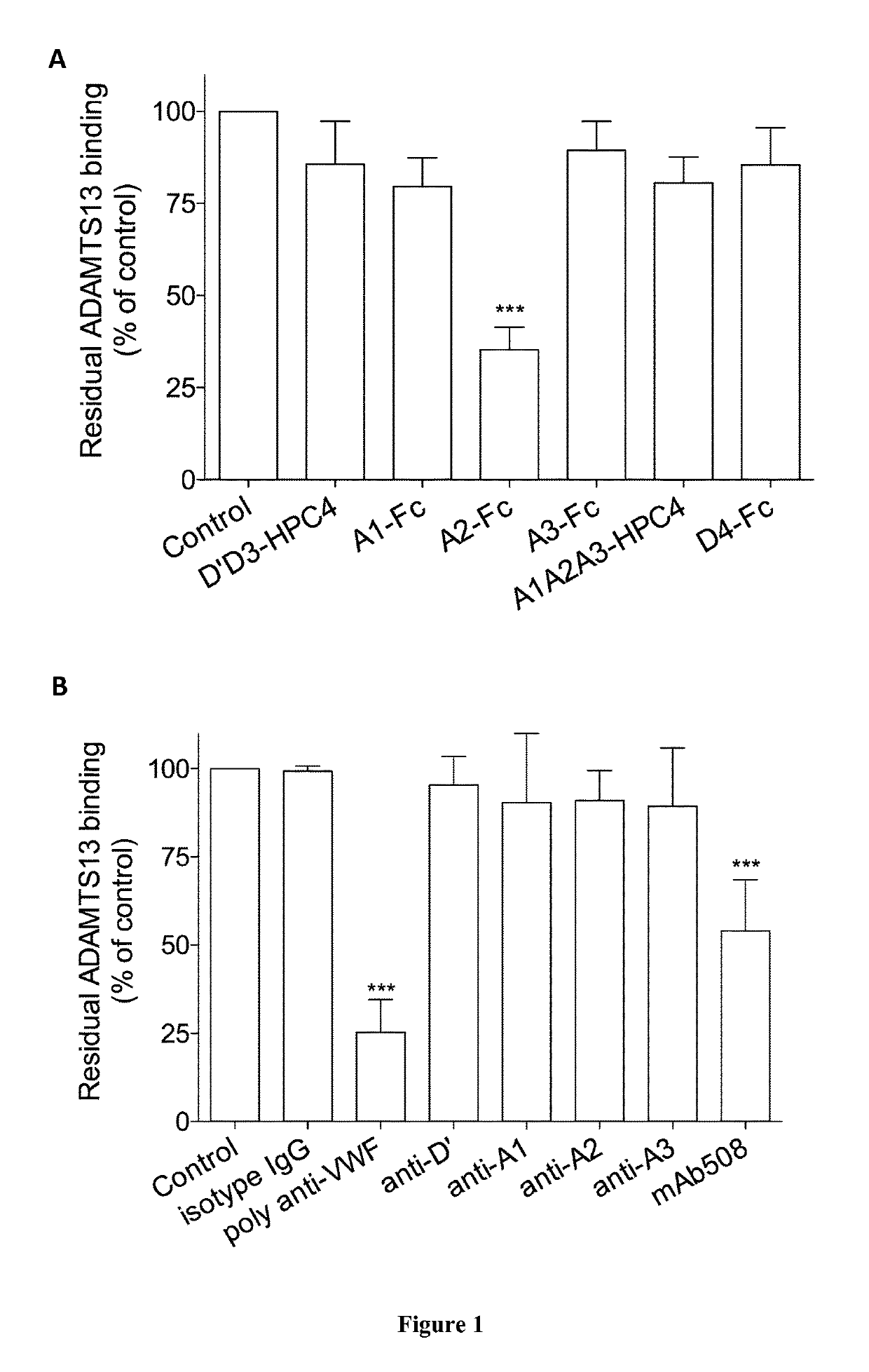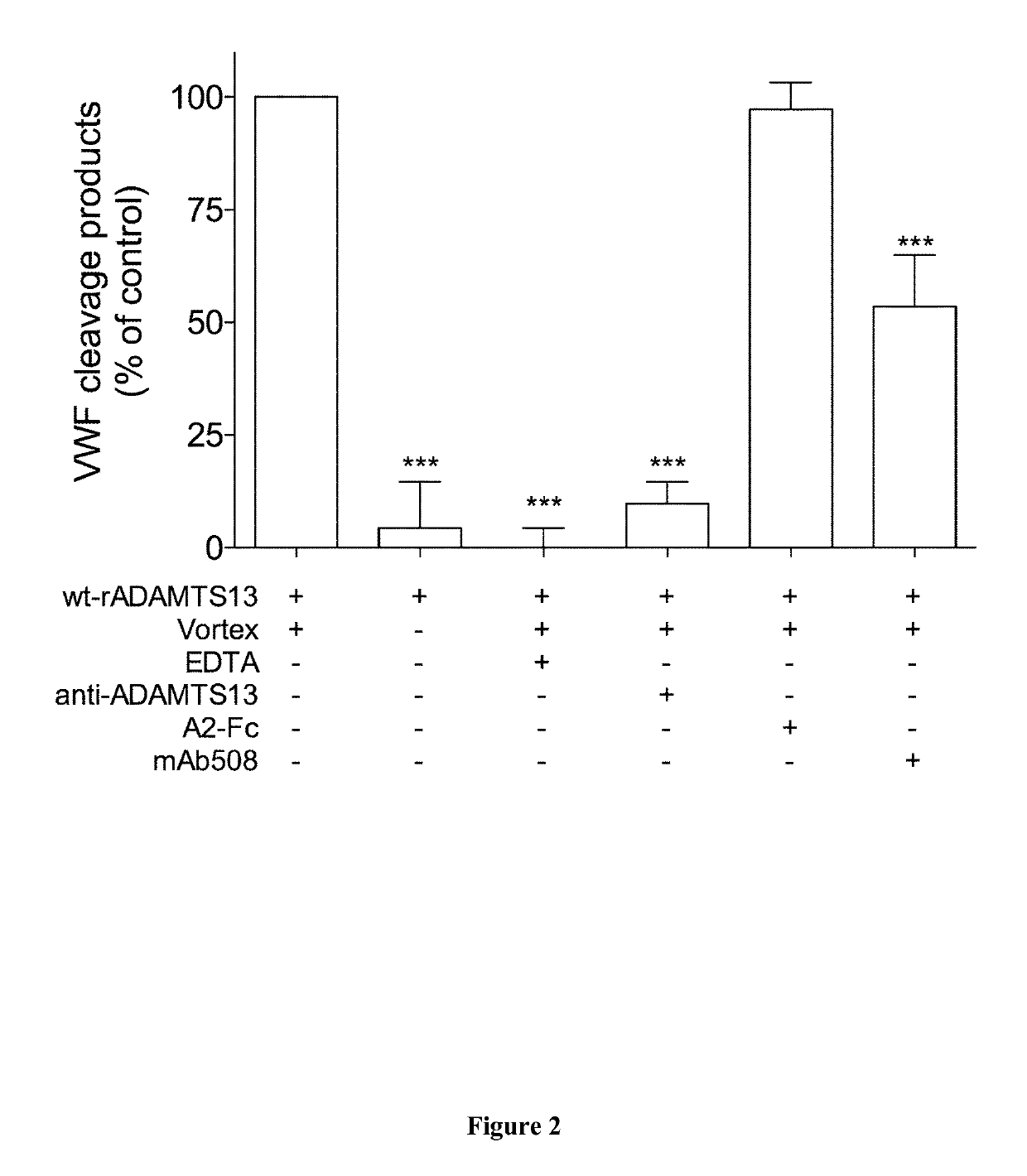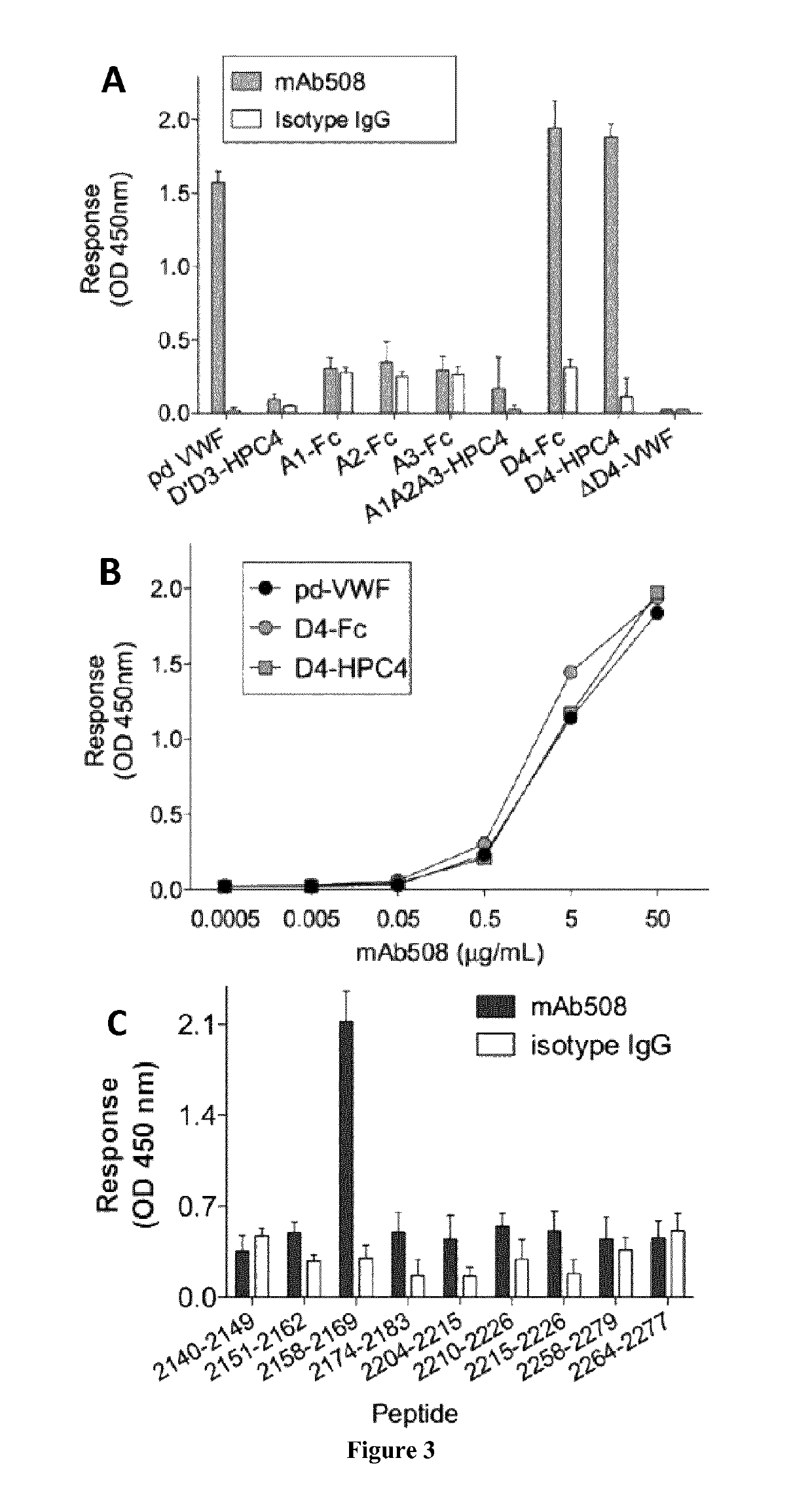Antibodies for the prevention or the treatment of bleeding episodes
a technology for antibodies and bleeding episodes, applied in the field of immunotherapy, can solve the problems of most challenging complications and limited graft availability
- Summary
- Abstract
- Description
- Claims
- Application Information
AI Technical Summary
Benefits of technology
Problems solved by technology
Method used
Image
Examples
Embodiment Construction
[0010]The inventors hypothesized that interfering with VWF-ADAMTS13 binding exosites might subsequently provide a partial inhibition of VWF proteolysis. They identified a monoclonal anti-VWF D4 domain antibody supporting this proof of concept. Biochemical analysis revealed a potent partial inhibitory effect on VWF-ADAMTS13 interactions. Its potential to diminish VWF proteolysis was confirmed using a recently developed ex vivo model of increased VWF degradation in whole blood induced by a circulatory assist device, which faithfully reproduces the biological phenotype of aVWS.
[0011]Accordingly, the inventors showed that the antibody of the invention (mAb508) shares it specificity for the D4 domain with antibody RU8, which was recently reported to interfere with ADAMTS13-mediated degradation of VWF in a vortex-based degradation assay (8). However, degradation of HMW-multimers was fully repressed in the presence of 25 μg / ml of antibody RU8, whereas residual VWF proteolysis was still det...
PUM
| Property | Measurement | Unit |
|---|---|---|
| concentrations | aaaaa | aaaaa |
| concentrations | aaaaa | aaaaa |
| diameters | aaaaa | aaaaa |
Abstract
Description
Claims
Application Information
 Login to View More
Login to View More - R&D
- Intellectual Property
- Life Sciences
- Materials
- Tech Scout
- Unparalleled Data Quality
- Higher Quality Content
- 60% Fewer Hallucinations
Browse by: Latest US Patents, China's latest patents, Technical Efficacy Thesaurus, Application Domain, Technology Topic, Popular Technical Reports.
© 2025 PatSnap. All rights reserved.Legal|Privacy policy|Modern Slavery Act Transparency Statement|Sitemap|About US| Contact US: help@patsnap.com



